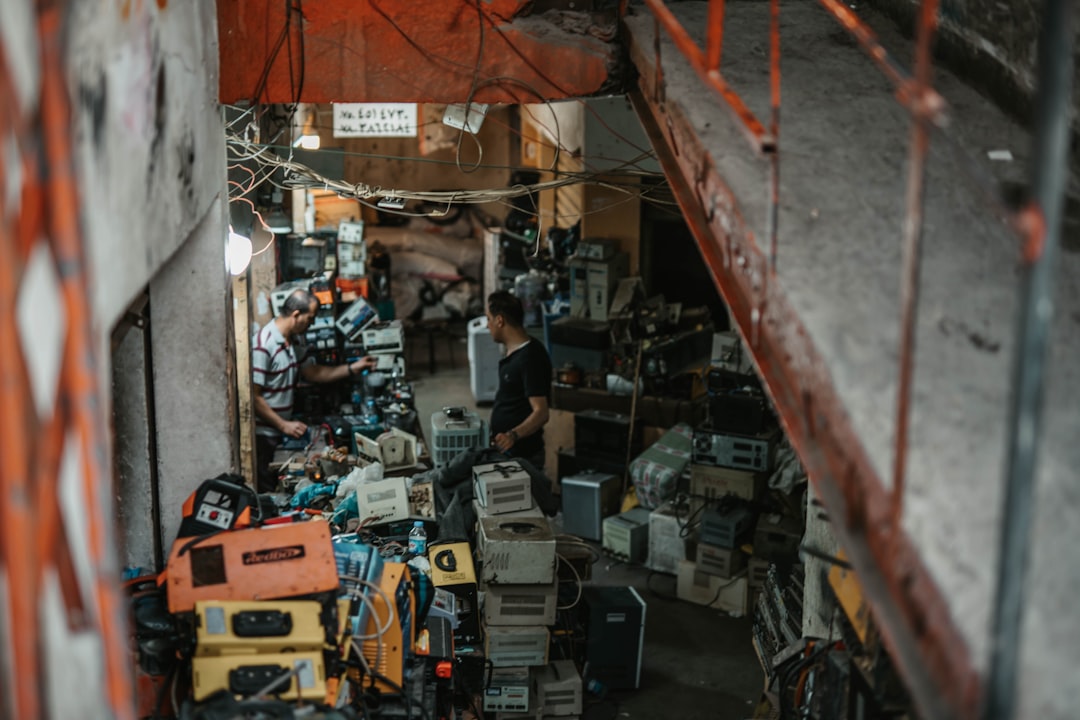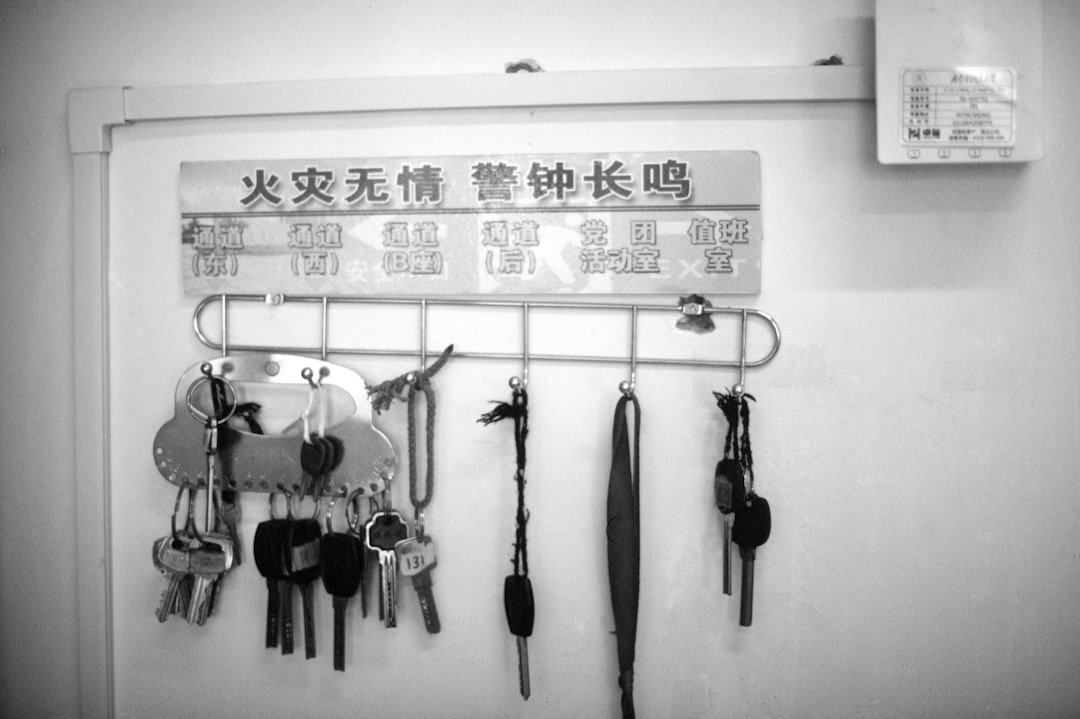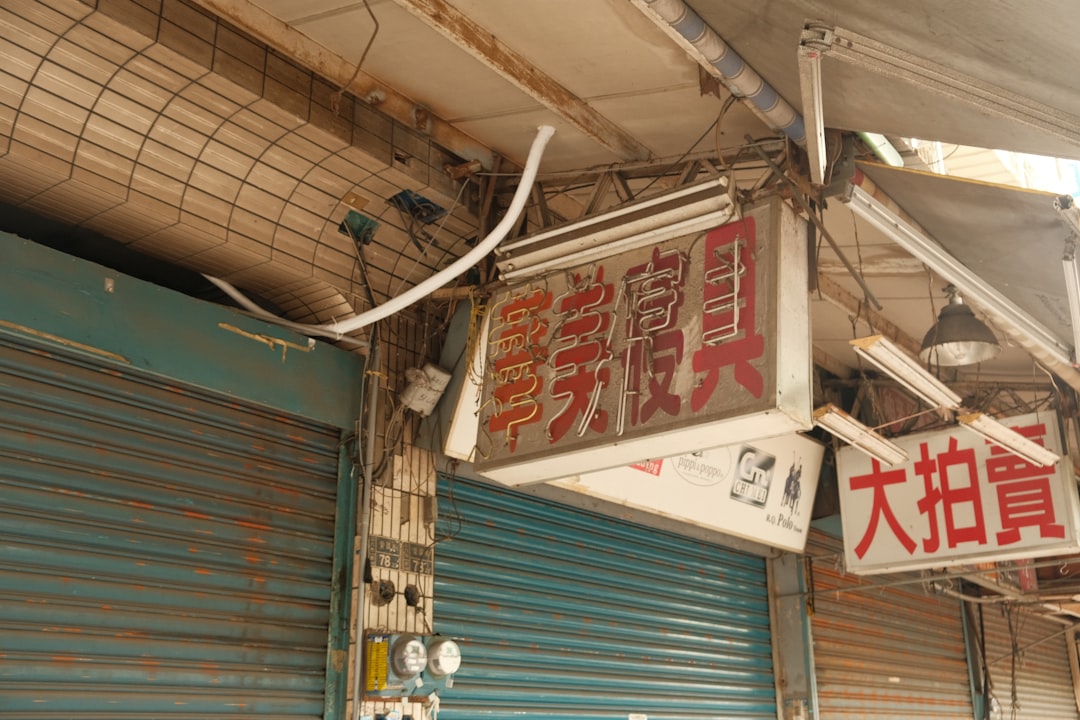

Engage prospects with a scan and streamline customer engagement with FREE QR code marketing tools by Sona – no strings attached!
Create a Free QR CodeFree consultation

No commitment

Engage prospects with a scan and streamline customer engagement with FREE QR code marketing tools by Sona – no strings attached!
Create a Free QR CodeFree consultation

No commitment
The automotive service industry is experiencing rapid digital transformation, and suspension repair shops are no exception. As more customers expect seamless interactions and instant information, these businesses face mounting pressure to modernize how they engage prospects and streamline in-shop experiences. Yet, many shops still rely on outdated printed brochures, static service price lists, and paper-based appointment scheduling, often resulting in lost leads and missed revenue opportunities.
QR codes have emerged as an essential tool for bridging these physical-to-digital gaps. With a single scan, customers can access suspension repair cost estimates, service menus, reviews, and more, all without downloading an app. For shop owners, QR codes offer measurable data, enhanced lead generation, and new ways to capture high-intent prospects searching for suspension repair near me, directly from offline touchpoints like invoices, waiting room signage, or digital inspections.
By embedding QR codes throughout both customer-facing and operational processes, suspension repair shops can deliver instant, actionable experiences that move buyers from awareness to conversion. The result is not only a better experience for customers but also clearer insight for owners into which marketing activities drive business. The sections below explore proven strategies and real-world examples to help you enable smarter access, improve lead quality, and make your shop a standout in today’s competitive automotive landscape.

QR codes connect in-shop moments and print collateral to digital experiences, making it easier for suspension repair shops to generate qualified leads, capture appointments, and provide on-demand answers to common questions like what are the signs that I need suspension repair or how much does suspension repair cost. When designed with clear calls to action and deployed at high-intent touchpoints, they transform passive attention into measurable conversions.
Start by mapping your typical customer journey from first awareness to post-service follow-up. Identify where friction appears: paper estimate pads that never make it into a CRM, outdated menus that do not reflect real-time pricing, and manual check-in forms that cause drop-off during busy times. Then place QR codes that eliminate these points of friction by routing customers directly to the next best action.
A unified QR solution simplifies these deployments by capturing data from every scan and automating follow-up. When contacts, appointments, and buyer signals sync directly to your CRM, you avoid the common issue of anonymous interest slipping through the cracks. With person-level identification and offline-to-online conversion tracking, you gain a record of which scan led to a booked appointment, a phone inquiry, or a five-star review. This enables targeted remarketing and smarter resource allocation.
Outdated analog processes like static waiting room posters, printed maintenance tips, and manual customer surveys can be replaced with dynamic QR codes that update content in real time, automate notifications, and feed remarketing segments. This immediate and actionable access accelerates the path to conversion and dramatically improves measurement for every in-store campaign. For shops struggling with incomplete or outdated data, this approach enriches your audience over time and supports more relevant follow-up.

Suspension repair shops operate in a fast-moving environment where small improvements in speed and clarity can significantly impact revenue. QR codes address core challenges that limit growth and customer satisfaction. When thoughtfully integrated into daily operations, they enable shops to meet modern expectations for instant information and frictionless action.
Equally important, QR codes transform previously unmeasurable interactions into trackable data points. Instead of guessing which flyers, signs, or inspection sheets influence customer behavior, shops can see exactly where interest begins and how it progresses.
For example, adding QR codes to appointment reminder cards lets customers confirm or reschedule with a scan, while a QR on a billboard or window decal can convert passersby into email subscribers or booked appointments. These small optimizations add up to more consistent bay utilization and more predictable revenue. If you want a refresher on services and parts, see this overview of suspension repair.
Suspension repair shops benefit from a focused set of QR formats that match everyday interactions. The right format ensures each scan triggers the most valuable action and fits the context in which it is scanned.
Two formats tend to carry the most weight in auto service environments: web links to drive booking and estimates, and forms to capture detailed vehicle information. Additional formats can enhance convenience, support customer service, or encourage ongoing engagement.
With a platform like Sona QR, you can generate and manage all of these formats in one place. Dynamic codes give you flexibility to iterate on destinations and campaigns without reprinting signage or cards, which is critical in a shop environment with frequent updates.

QR codes deliver the most impact when placed where customers already make decisions or seek clarity. Shops often overlook these opportunities because they treat print and in-shop interactions as purely informational rather than actionable. The goal is to connect each moment of interest to a next step you can measure and optimize.
Consider the specific zones in your shop where customers pause, ask questions, or consider add-on services. These are ideal places to place QR codes that clarify pricing, showcase expertise, and accelerate decisions.
Focusing on high-traffic, high-intent placements in your workflow helps convert interest that would otherwise remain anonymous. The key is clear messaging near each code that promises immediate value, such as scan to see today’s price or scan to join the priority queue.

Suspension repair shops can convert routine touchpoints into revenue drivers with a few focused use cases. Each use case should map to a common customer behavior and a measurable business outcome. By testing and iterating on these examples, shops can quickly identify which workflows drive the highest return.
When deploying these use cases, remember to tailor the destination content for mobile screens and keep the steps short. The faster customers get value, the more likely they are to complete a form, book an appointment, or leave a review.
Each use case not only produces immediate actions but also supports long-term performance measurement. Scan data combined with CRM records reveals which campaigns earn the most quotes, which placements drive bookings, and which service experiences produce five-star reviews.
Every QR scan tells you something about a customer’s intent and context. By deploying multiple codes across your touchpoints and tagging them by stage, you can segment audiences automatically and nurture them with precision. This is a major upgrade over broad campaigns that treat every prospect the same.
Start by defining your core audience segments in the context of suspension repair. Common groups include first-time visitors seeking a diagnosis, repeat customers scheduling maintenance, and price-sensitive shoppers comparing estimates. QR scans can provide instant signals to sort each group and tailor follow-up.
With Sona QR, each code becomes a smart gateway into your funnel. Sona’s integrations streamline the flow of scan data into CRMs like HubSpot or Salesforce and media platforms like Meta. For CRM setup, see Sona’s guide to HubSpot integration.
QR codes fit naturally into the marketing channels that suspension repair shops already use. They serve as the connective tissue between offline moments such as print and in-shop signage and online systems such as booking portals and review sites. Integrating them across channels brings consistency, speed, and measurable outcomes to your entire marketing stack.
The aim is to make every offline impression scannable and every scan actionable. When all scan data flows to a central platform, your team can evaluate performance across channels and double down on what works.
QR codes act as a consistent onramp to your digital workflows. Using a centralized platform like Sona QR allows you to manage all codes, monitor how each channel performs, and sync scan data to your CRM and ad tools. That ensures the offline-to-online funnel is connected, measured, and optimized.
Before building your first campaign, establish clear goals and audit your physical media. Identify which printed items you will update first and which customer interactions will benefit most from scanning. Then select a platform for generating codes, routing scans, and collecting analytics so you can iterate quickly.
The following five steps will help you plan, launch, and optimize a campaign that fits the realities of a busy suspension repair shop. Treat these steps as a cycle rather than a one-time task, since your best-performing placements and messages will evolve over time.
Clarify the business outcome you want to improve. For most suspension repair shops, high-impact goals include increasing online appointment bookings, capturing more quote requests, and boosting post-service reviews. If your bays sit idle during certain hours, focus on fill-rate. If your reviews lag competitors, emphasize reputation building.
Choose between static and dynamic codes based on flexibility and measurement needs. Static codes are adequate for evergreen content like your homepage or a PDF brochure. Dynamic codes are best for campaigns that will be updated, optimized, or tracked closely over time.
Your QR design should reflect your brand and make scanning feel safe and valuable. Add a brief call to action that sets expectations. Then test scanning in real conditions to confirm speed and reliability across devices and lighting environments.
Place QR codes where your customers naturally pause or seek information. Match the destination to the context of the placement, and ensure visibility with proper size and contrast. Rotate offers seasonally and update content as parts prices or labor availability change.
Use analytics to learn which codes and placements perform best. Watch for scan volume, conversion rates, and time-of-day patterns. Run controlled tests of different destinations and calls to action until you find top performers, then roll those improvements to all shops or placements.
Successful suspension repair shops do more than deploy QR codes. They measure the impact of each scan across the customer journey and use that insight to allocate resources. Without analytics, it is difficult to know which campaigns produce real business outcomes and which simply generate traffic without conversions.
Advanced QR analytics help you see scan counts, identify trends, and attribute revenue back to campaigns. When combined with CRM data and customer communication systems, these insights reveal which placements fill bays, which offers convert, and which messages encourage reviews and referrals.
With Sona QR and Sona.com, shops can capture detailed scan data including time, device type, and location, then tie it to downstream actions. For measurement strategy, see Sona’s guide to offline attribution and compare models with multi-touch frameworks.
Once your first QR deployments are live, focus on scaling what works and streamlining the workflow for your team. The most successful shops treat QR campaigns as an always-on system that supports operations and marketing together.
Start by standardizing code creation, placement, and messaging. Then layer in automation so each scan triggers a follow-up sequence. Train technicians and front-of-house staff to direct customers to QR-enabled experiences at the right moments.
These tactics help shops gather higher quality leads, build loyalty, and convert more in-shop interactions into measurable outcomes. Over time, standardized QR workflows free up staff effort and produce consistent data for leadership decisions.

Seeing how other shops apply QR codes can spark ideas for your own environment. The most effective examples are simple, visible, and promise immediate value. Below are a few models that suspension repair operators have used to lift conversions and enhance reputation.
The common thread is clarity. Each QR placement promises a specific outcome in plain language. When customers know exactly what they get by scanning, engagement and follow-through increase.
Creative QR deployments improve both customer experience and measurable results. By pairing them with strong CTAs, clean designs, and mobile-optimized destinations, shops can continuously test and expand what works best in their market.
A few practical details can make the difference between a high-performing QR campaign and one that never gains traction. Focus on visibility, relevance, and operational follow-through. Avoid common missteps that create friction or confusion at the moment of scanning.
Consistency across media matters. Use similar CTAs and visual frames around your codes so customers recognize them quickly. Position codes where a phone can easily scan without awkward angles or glare.
QR codes have become a cornerstone of digital transformation for suspension repair shops, empowering them to convert every physical and print interaction into a measurable, revenue-driving moment. For shops that have long struggled with missed appointments, anonymous prospects, or limited follow-up options, these tools unlock actionable data at every stage of the journey and support better decisions.
The result is a seamless, data-rich experience that delivers instant access to suspension repair cost estimates, online scheduling, customer reviews, and expert advice while automatically capturing valuable buyer signals. When paired with robust tracking, CRM integration, and predictive analytics, QR campaigns enable shops to reclaim lost opportunities, segment audiences more intelligently, and communicate with high-fit prospects who were previously invisible to traditional analytics.
Start integrating QR solutions into your shop’s marketing and operational strategies to capture more demand, enrich your customer database, and build a standout reputation in your local market. With a platform like Sona QR for code generation and analytics, and Sona.com for attribution, you can move from one-off experiments to a connected, always-on system that compounds results week after week. For identity and segmentation at scale, see Sona’s account identification. Start creating QR codes for free at Sona QR.
QR codes have transformed suspension repair shops from traditional service centers into interactive hubs that drive customer acquisition and enhance service transparency. By integrating QR codes, shops can offer instant access to repair histories, maintenance tips, and special promotions, creating seamless, informative experiences that build trust and encourage repeat business. Imagine customers scanning a code to instantly view their vehicle’s suspension status or schedule their next service—all while you capture valuable engagement data.
With Sona QR, suspension repair shops can create dynamic, trackable QR codes in seconds, update content on the fly without reprinting, and link every scan directly to service bookings and revenue growth. No more missed opportunities or outdated materials—just smarter, data-driven customer connections that boost loyalty and sales.
Start for free with Sona QR today and transform every scan into a loyal customer and every visit into lasting value.
Signs you may need suspension repair include worn shocks or struts, poor alignment causing uneven tire wear, and symptoms identified during vehicle inspections or by technician advice accessible via QR codes.
Suspension repair costs vary based on your car's make, model, and trim, and can be accessed instantly through digital service menus and cost calculators linked via QR codes in suspension repair shops.
Use QR codes found on appointment cards, inspection sheets, or online listings to access reviews on platforms like Google and Yelp, helping you identify reputable suspension repair shops.
The process includes vehicle inspection with symptom reporting, estimate requests via QR-enabled forms, approval through digital estimates, followed by scheduling and performing repairs with updates accessible through QR code interactions.
Damage indicators include symptoms noted during inspections, technician video advice accessible via QR codes explaining worn shocks and struts, and signs such as alignment problems or uneven tire wear.
Shops use QR codes to provide instant access to service menus, cost estimates, appointment booking, customer reviews, and educational content, reducing friction and improving lead generation and conversion.
Common QR code formats include web links for booking and estimates, forms for vehicle info and feedback, vCards for contact sharing, Wi-Fi access credentials, and loyalty program enrollment.
Effective placements include appointment cards, waiting room posters, inspection reports, receipts, service bay signage, direct mailers, windshield stickers, and event booths where customers pause or seek information.
Shops track scan counts, locations, devices, and conversion rates using platforms like Sona QR, enabling A/B testing, real-time adjustments, CRM integration, and revenue attribution for continuous campaign improvement.
Avoid placing codes in low-visibility areas, sending scanners to generic homepages, neglecting staff training on QR usage, and failing to monitor analytics for broken links or low engagement.
Use Sona QR's trackable codes to improve customer acquisition and engagement today.
Create Your FREE Trackable QR Code in SecondsJoin results-focused teams combining Sona Platform automation with advanced Google Ads strategies to scale lead generation

Connect your existing CRM

Free Account Enrichment

No setup fees
No commitment required

Free consultation

Get a custom Google Ads roadmap for your business






Launch campaigns that generate qualified leads in 30 days or less.
